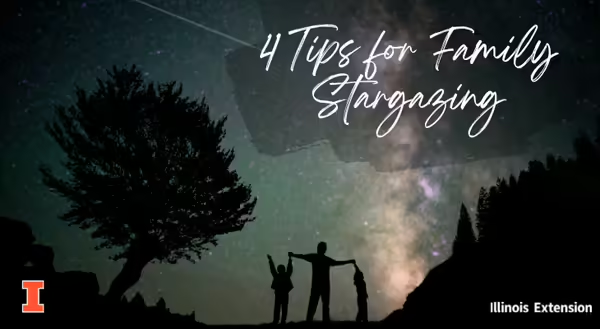
The night sky can be full of wonder for children. I can hear all my kid’s questions from when they were little… What are the stars made of? Why are some stars brighter than others? Why do they seem to twinkle? If you have never tried out star gazing with your family - now is the perfect time! The nights are longer and weather isn’t too chilly yet! Here are some tips to keep in mind when planning your star gazing adventure.
Pick a good spot
Depending on your level of adventure seeking (and attention span of your children), you may want to start out in your back yard or somewhere close by. However, depending on where you live, you may want to venture to a location with less light pollution. Objects in the night sky will be much easier to see the farther you are away from natural or artificial light (try to stay away from nights with a lot of moonlight and places with street lamps, etc.).
Bring proper gear for the family
Blankets and pillows are a must so you can comfortably lay down and look up at the sky! Be sure to bring extra blankets or coats and hats if the weather is chillier. It can take up to 20 minutes for your eyes to adjust to the night sky, so your best viewing ability will some patience from everyone.
SNACKS
Just like viewing a good movie, yummy snacks help keep everyone occupied and star themed snacks would be extra fun – you could bring Moon Pies and read one of my kids’ favorite books, “ Jimmy Zangwow’s Out-of-this-World Moon Pie Adventure”!
Star gazing tools
Some families may have binoculars or a telescope, which is great to help see the stars, planets, and moon up close, but don’t worry if you don’t have one. There are many star gazing apps available and University of Alaska: Museum of the North has a great star wheel resource that can help you identify what you see (it is easiest if you make this ahead of your adventures). It is helpful to bring a flashlight as well, but be mindful that the light from a flashlight can change how well adjusted your eyes are to the darkness, so you may want to have a red flashlight, or you can learn how to build one here.
If star-gazing becomes something your family really enjoys, you may also want to check out Adler Planetarium’s list of where to go to explore the night sky, as well as some other helpful star-gazing tips. The American Museum of Natural History also has A Kid’s Guide to Astronomy with lots of great tips and resources.
MEET THE AUTHOR
Judy Schmidt provides leadership to 4-H metro programming in Peoria County. Schmidt joined Extension in 2001, working as a Youth Development Educator at the East Peoria Center and joined the Fulton-Mason-Peoria-Tazewell unit in 2011. Her work focuses on 4-H youth development programming in the local metropolitan area, specifically leading positive youth development initiatives for after-school programs, community groups, 4-H clubs and other youth-serving organizations. Her areas of expertise include positive youth development principles, youth leadership, and work with teens as teachers.
Schmidt attended the University of Illinois at Urbana-Champaign for her bachelor's degree in psychology and also for her master's degrees in Social Work and Marriage and Family Therapy. She is a certified facilitator of the Matrixx System/Real Colors program by the National Curriculum and Training Institute.
ABOUT THE BLOG
Connection Corner: is a blog that provides timely information, activities, and resources to help you stay connected to loved ones, the world around you, and yourself.